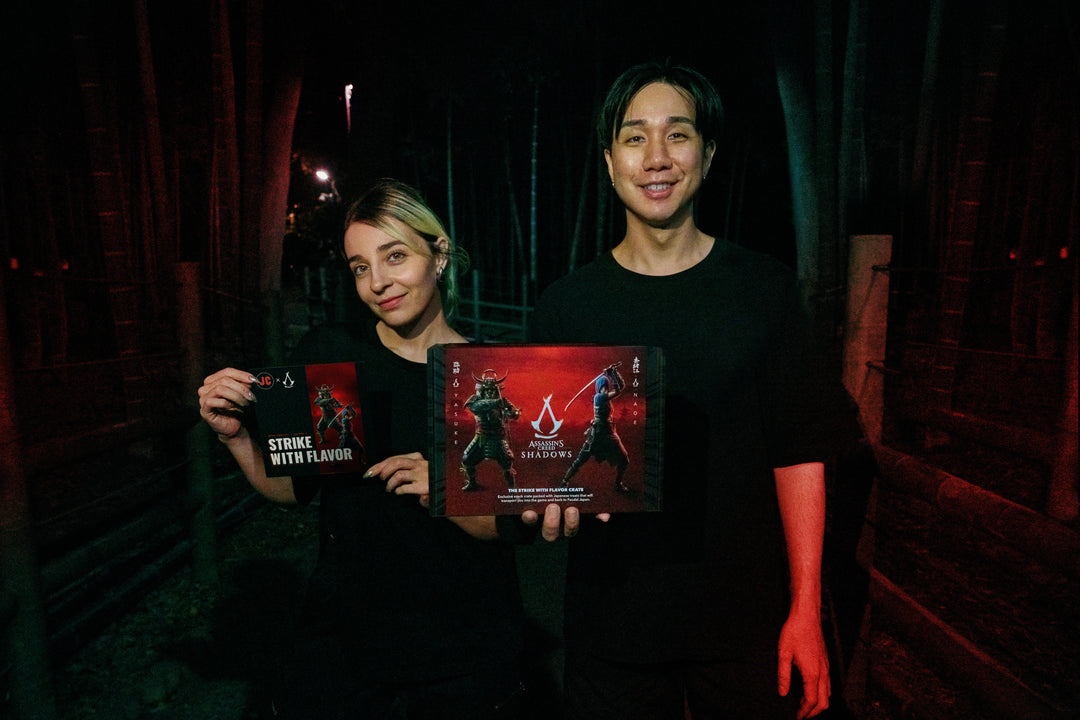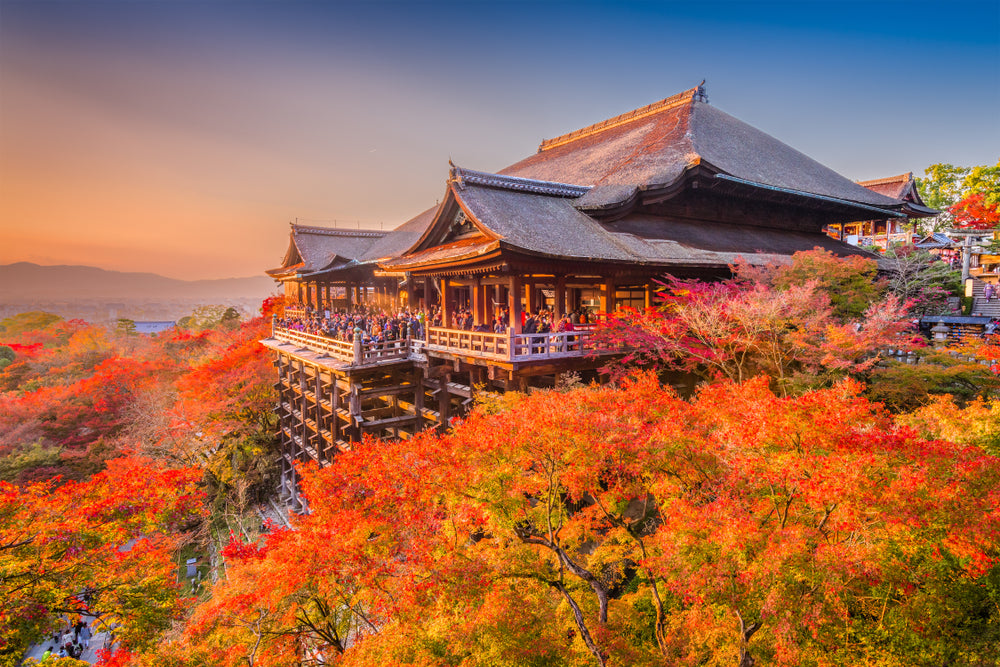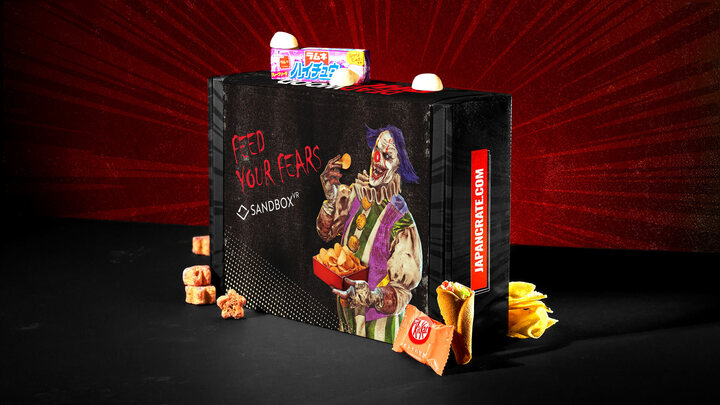Why is Taiyaki Fish-shaped?
As the weather gets cooler, everyone longs for a warm treat to fend off the chill. Taiyaki, a baked Japanese sweet loaded with sweet red bean paste, or anko, and served warm, is a very well-liked example of this type of food in Japan. Taiyaki, one of Japan's most popular street snacks, is readily accessible throughout the nation but is especially popular in Tokyo. Don't worry; it doesn't even taste like fish. In fact, the sweet red bean filling, sweet potato, custard, chocolate, and cheese are included in this fish-shaped dessert. You may also find taiyaki with okonomiyaki, gyoza, or sausage inside some stores.
Different taiyaki depend on the prefecture of Japan you visit, just like pretty much all Japanese food. These totally endearing Taiyaki cakes may seem like they were designed for social media posts, but they actually have their roots in Japan from the early 1900s. Since then, taiyaki has become a well-liked festival street dish in Japan. But wait, there's more! Another interesting taiyaki fact is that the Japanese frequently argue about whether it's better to eat the head or tail first. With these tasty delicacies, there's even more adventure to be had. Read on to learn everything you need about Taiyaki and why it is shaped like a fish.
What is Taiyaki?

These tiny fish-shaped treats are a cross between a cake and a waffle, making them one of the staples of Japanese cuisine. Typically, they are stuffed with sweet red bean paste, and the batter is a touch thinner than the pancake batter and provides the perfect texture for savory fillings. The interior is chewy, while the edges are thick and crispy. You can also get modern taiyaki in restaurants that serve classic taiyaki, filled with a variety of delicious ingredients. Taiyaki also calls for additives like chocolate, milk, cheese, green tea, and others in addition to sweet beans. Indeed, it offers a plethora of alternatives, much like a pancake. They also invented the taiyaki ice cream, which is sold in savory varieties of flavors.
This Taiyaki is a snack that can be found in many places in Japan. Both urban and rural locations have many specialty stores that sell taiyaki. Furthermore, Taiyaki fluffy fish-shaped waffles are frequently produced and made in a special fish-shaped mold to give them the desired shape. When you purchase taiyaki from a vendor, they typically employ specialized grill plates with numerous fish-shaped molds that can produce many taiyaki at once. Each typically costs between 100 and 300 yen. The size varies depending on where you purchase it, but it is typically 15 centimeters. Wherever you buy them, you should eat them right away to ensure the finest flavor and the ideal combination of crisp and fluffy texture!
History of Taiyaki

Compared to other wagashi, taiyaki is a relatively recent addition to Japanese confections. The taiyaki recipe was adapted from an older Japanese sweet that at least dates to the Edo period (early 19th century). The snack known as Mojiyaki, which translates to "grilled characters," is thought to be the forerunner of Taiyaki. It was a thin, hard cookie made by pouring batter onto a griddle in various shapes, such as fish and turtles.
Taiyaki also shares similarities with Imagawayaki, which is kind of like Japanese round-shaped cake waffles, only the center of the mold allows the waffle batter to be filled with sweet azuki bean paste. Seijiro Kobe decided to bake the cakes into fish forms mimicking tai, or red seabream, when he had problems selling his imagawayaki. A Tokyo store called Naniwaya Shonten, which originally opened its doors in 1909 is frequently given the honor of creating the first contemporary Taiyaki. The sweets were baked in single iron molds or taiyaki pan, giving them a three-dimensional shape and enabling them to be filled with anko. Since its birth, it has undergone several changes, including various filling and batter ingredients and altered shapes and sizes.
Why is Taiyaki shaped like a fish?

Imagawayaki vendors were looking for fresh approaches to resurrect their sector. One suggestion was to design their imagawayaki pancakes into various animal shapes, including turtles and bunnies, to attract more customers. It wasn't until 1909 that one imagawayaki vendor decided to make his pancakes in the shape of red seabream, or, in Japanese, tai. So why was a seabream such a general one of all the possible forms this delicious Japanese snack could take? There are several possible explanations, albeit none of them can be ruled out.
During the Meiji era, seabream was a costly dish that was only offered on special occasions like weddings and New Year's Day. This was due, in part, to the pricey fish, which is still extremely expensive in Japan today. As a result, taiyaki is an inexpensive way for common people to taste this auspicious fish. Moreover, the fish has long been considered a lucky symbol in Japan. Even the name Tai is said to be fortunate because it rhymes with the word medetai, which is a Japanese word that denotes happiness or success. Taiyaki's distinctive shape serves as excellent marketing, but it also has cultural importance. Red sea bream was once one of the most sought-after fish in Japan due to its flavorful flesh and lucky red color.
That said, in contrast to the imagawayaki -shaped like a rabbit and a turtle, the red sea bream-shaped pancakes immediately became popular. Soon, it had transformed into taiyaki: fried sea bream, a completely new snack category. In recent years, taiyaki has become a staple of Japanese street food culture. While there are several taiyaki shops with permanent locations all around Japan, it's common to see this snack being sold from food stalls near shrines and other tourist destinations, as well as commonly appearing during regional festivals. Japan's little sea bream fish pastry thus continues to serve its original festive purpose of being primarily consumed on the go for festivals or special occasions.
What are the different types of Taiyaki?

With pretty much all Japanese food, there is also a variety of taiyaki fish shape snacks depending on where in Japan you go. A specialty of Tsushima City in Nagasaki Prefecture is saga taiyaki, a taiyaki with a bent tail and a more circular body shape. Another variation of taiyaki has wings. The fish-shaped taiyaki, also known as hanetsuki taiyaki, is encircled by a thin, crispy wafer of batter with wings attached. Additionally, in Kazo City, Saitama Prefecture, the taiyaki is created to imitate the carp streamer to celebrate Boys Day on May 5, called koinoboriyaki. In cities like Nagasaki City and Hokkaido's Muroran City, the waffle is referred to as kujirayaki (baked whale), and in Fukuoka Prefecture, they serve taiyaki in the form of a sunfish (manbouyaki).
As a favorite food in Japan, taiyaki has also recently gained popularity elsewhere. In fact, taiyaki has gained popularity in different forms and spinoffs. Probably one of Taiyaki's most well-known offshoots is Taiyaki Ice Cream. Simply put, the taiyaki's inside shell is flavored with milky soft serve ice cream, and various toppings are placed on top. . This particular taiyaki dish first became well-known in the United States, particularly in New York. There is also White Taiyaki, commonly known as White Mochi Taiyaki or simply White Taiyaki, which is softer and chewier than typical taiyaki. This is a result of the mochi-like dough used to make white taiyaki. In addition, Taiyaki is even available as a croissant. This type of takoyaki has a dough more akin to croissants, and puff pastry is utilized instead of the waffle-like batter that traditional taiyaki utilizes. The croissant taiyaki is rectangular in shape with a prominent fish imprint in the middle due to the shape of the dough. Lastly, altering the batter that is used to manufacture taiyaki is another method that shops come up with novel new varieties. For instance, there may be versions where the taiyaki's outside is flavored with matcha, chocolate, or sakura (cherry blossoms).
What are the different fillings for Taiyaki?

Anko has remained a standard ingredient in Japanese desserts, but taiyaki's appeal has changed over time. One area where contemporary taiyaki differs from its traditional relative is in the tasty fillings. Today, there are several filling options besides the sweet red bean paste that has traditionally been used. Among the most popular taiyaki flavors are custard, chocolate, and matcha. Despite being a little less frequent, you may also get savory combo variations with some other well-known Japanese food to try, as well as springtime sweet potato taiyaki versions with sakura flavors.
Another type of Taiyaki fillings tastes similar to Western candies, like cheese cream and caramel cream, which are both made with cream cheese. As a result, it may be used to make both Japanese and Western sweets, and the components inside are many and diverse. In addition, there are other foods that can be used to make taiyaki. A meal type that can be consumed includes foods like rice balls and sandwiches. Many different components are included in okonomiyaki, including tuna, egg, cheese, ham sandwiched, white sauce and curry, cabbage, and pork sandwich.
Where to Find Taiyaki?

Taiyaki is regularly manufactured and sold at stalls during festivals, and they are available at specialty shops in both urban and rural areas. Even infrequently, you can find taiyaki in convenience stores. Some recommended stores are Naniwaya Sohenten, a long-running store that opened in 1909 during the Meiji period. Their Taiyaki is distinguished by a waffle that is both thin and crunchy. It comes from Tokachi, Hokkaido, and is baked with wheat flour and azuki beans. Another well-known retailer with a long history is Yanagiya, founded 101 years ago. In order to preserve the flavor of the azuki beans, Yanagiya is careful about handcrafting anko every morning and utilizing them all up that day.
Moreover, one of Tokyo's Big 3 Taiyaki stores, along with Naniwaya and Yanagiya stores, is the Wakaba store. In 1953, Wakaba was established. Their Taiyaki has a salty flavor from the bread, and the sweet red bean paste goes nicely with it. It feels weighty since the tails are loaded with paste. Last but not least, Sakuraya is a restaurant in Shimbashi where many individuals are dressed professionally. There are options for the thick or thin batter at this shop. The thin Taiyaki from Sakuraya costs 190 yen, while the thick one costs 210 yen.
If you can't get to Japan right now, you can buy frozen taiyaki in Asian markets or even try making it at home. If you wish to make taiyaki at home, see our recipe below.
How to Make Taiyaki?

Taiyaki is best enjoyed as a street snack while it is still hot from the pan as you are strolling through a park during a matsuri or Japanese festival. Despite the fact that taiyaki was originally intended to be consumed hot off the grill during a festival, it is now entirely feasible to find a recipe online and prepare your own at home. Taiyaki is a simple dish to make, with one minor difference. You'll need a taiyaki pan, a type of sandwich press that resembles a waffle maker and comes with numerous fish-shaped molds, to make the authentic, fish-shaped version of this delight at home. Although purchasing specialized equipment only for taiyaki may seem laborious, it is well worth the effort because the pan is essential for giving your filling enough room and ensuring your beloved fish pastry is tightly wrapped and crisp at the edges! Here's a simple and easy recipe to make the best taiyaki in the comfort of your kitchen.
Ingredients
-
Cake flour
-
Baking powder
-
Baking Soda
-
Milk
-
Sugar
-
Eggs
-
Vanilla extract
-
Ingredients for preferred filling
Cooking Instructions:
1. First, prepare the taiyaki batter. Like with pancake or waffle batter, you must prepare the wet and dry ingredients separately before combining them.
2. To continue, sift the cake flour, baking powder, and baking soda into a dish with the sugar. In a separate bowl, carefully mix the egg and milk before combining them with the dry ingredients.
3. Once the batter is ready, it's time to make the taiyaki! After heating the pan, coat it with vegetable oil.
4. Add the fillings you like. After adding your choice filling and topping with additional batter, fill the molds on one side of the heated pan with batter until they are approximately half full.
5. A heat-safe pastry brush should next be used to brush the batter up the sides and into the fish's tail and fins. Once the batter is no longer runny, repeat the process with another tablespoon of batter on each side, moving the pan upside down to even the batter's crunchiness.
6. Taiyaki pan should be covered and cooked for about 5 minutes, regularly flipping to ensure that both sides are cooked through.
7. When the taiyaki is golden brown, carefully take it from the pan and either let it cool or eat it right away for the most mouth-watering street food experience!
It's Japan Crate Time!
Taiyaki is a popular Japanese sweet dish that is appreciated by many and is a significant part of Japanese culture. For anyone interested in Japanese cuisine and culture, it is a fantastic experience. But if you want to have a taste for more Japanese sweet treats, then Japan Crate is the perfect choice for you! Japan Crate has many Japanese sweets available, and they are all delectable and popular. Japan Crate boasts a Japanese theme of the monthly delicacies you may enjoy at home. Enjoy!
Author Bio







Leave a comment